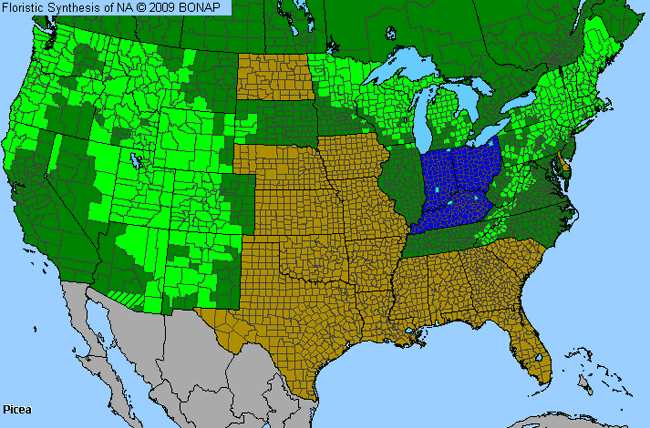Spruce (Picea)

Spruce Genus Details

Spruces have many horticulture forms but most varieties are 40-80' tall. All are rigidly upright, pyramidal, single-trunked trees. They are stiff in outline and many of them have rigidly held horizontal branches produced in circular growth patterns. Their cones all hang downward. Needles are evergreen and generally 1/2-3/4" long. Spruce have been used for a commercial timber tree as well as for Christmas trees.
Spruce Allergy Info

Members of the pine family pollinate profusely, contributing large numbers to pollen counts. However, they are rarely considered a particularly allergenic pollen.
Spruce Pollen Description

Pine grains are large due to their sacs or bladders, which make them one of the easiest pollen grains to identify. These sacs also allow them to be carried great distances by the wind. Among winged grains, the body is subspheroidal to broadly ellipsoidal. The bladders are generally reticulate or occasionally smooth.
Picea pollen grains can be as large as 160 micrometers.
Species in This Genus

Allergenicity Legend:
 Mild Allergen |
Mild Allergen |
 Moderate Allergen |
Moderate Allergen |
 Severe Allergen |
Severe Allergen |
 Allergy Test Available
Allergy Test Available
Spruce (Picea) is a genus of the PINACEAE family.
This genus includes the following allergenic species:
This genus includes the following allergenic species:













